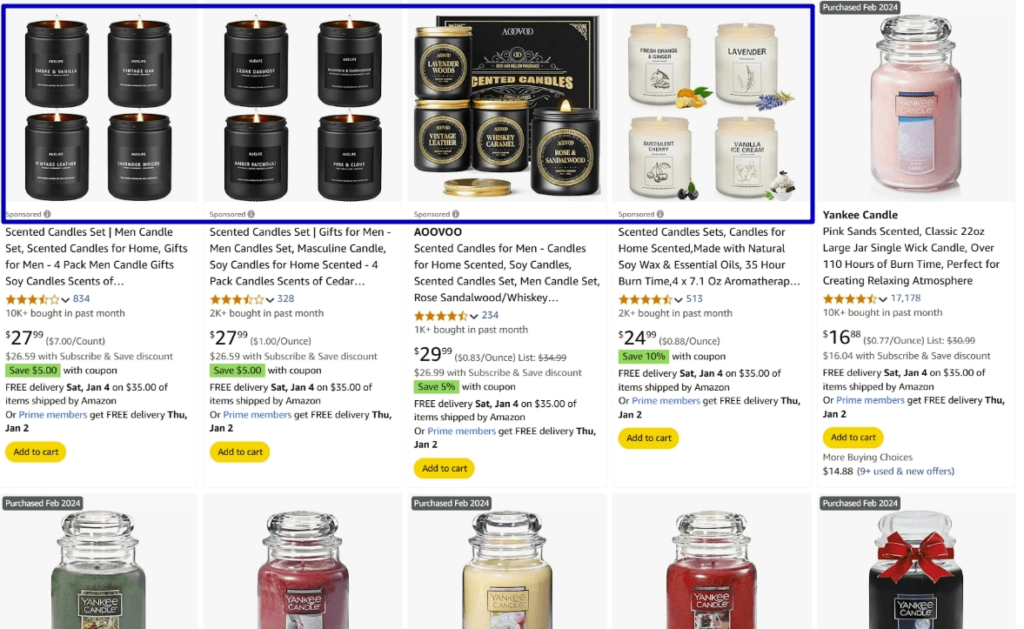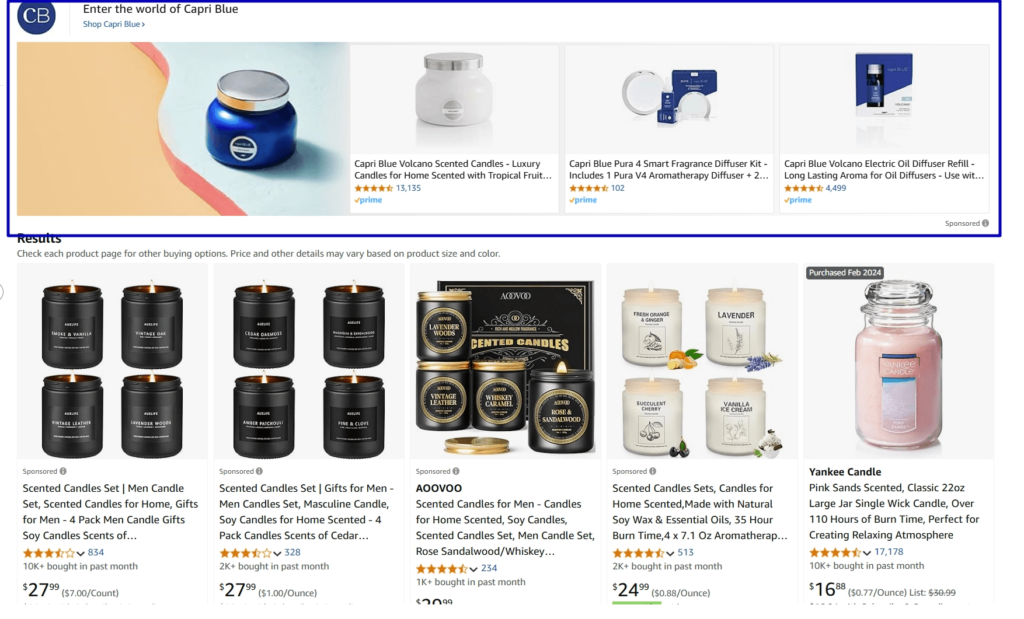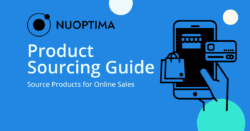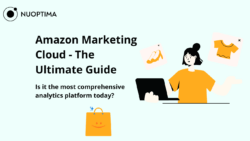Willkommen, versierte E-Commerce-Krieger! Wie Sie sicher wissen, ist das Schlachtfeld des Online-Verkaufs hart umkämpft. Mit Amazon als dem Moloch, der er ist, ist das Ignorieren seines Potenzials so, als würde man Geld auf dem Tisch liegen lassen. Deshalb ist die Beherrschung der Kunst der PPC-Kampagnen (Pay-Per-Click) für jeden, der sich auf dem heutigen digitalen Markt profilieren will, unerlässlich.
Aber Werbung ist kein Zuckerschlecken, nicht wahr? Die Herausforderungen sind zahlreich, vom Vorsprung vor den Mitbewerbern bis hin zum Kampf mit der Gebotsabgabe für Schlüsselwörter. Genau deshalb ist das Verständnis der Struktur von Amazon PPC-Kampagnen so wichtig - es ist Ihre Strategie, Ihr Spielplan und Ihr Fahrplan in einem.
Wenn Sie sich also schon immer gefragt haben, wie Sie eine Kampagne strukturieren können, wie die Spezialisten unserer preisgekrönten Amazon PPC-Agentursind Sie an der richtigen Stelle gelandet. Wir werden in jeden Winkel der PPC-Kontostruktur auf dem Marktplatz eintauchen und Ihnen umsetzbare Tipps geben. Egal, ob Sie ein E-Commerce-Neuling oder ein Werbe-Veteran sind, hier ist etwas für Sie dabei. Sind Sie bereit, den Sprung zu wagen? Los geht's!
Die Bedeutung der Struktur einer Amazon PPC-Kampagne
Wir alle haben das schon erlebt: Wir haben ziellos eine Werbekampagne gestartet, die Daumen gedrückt und auf das Beste gehofft. Aber seien wir mal ehrlich: Hoffnung ist keine Strategie. Eine schlecht aufgesetzte Anzeige ist wie das Werfen von Dartpfeilen im Dunkeln; Sie werden wahrscheinlich nicht das Ziel treffen. Ohne eine gut durchdachte PPC-Kontostruktur riskieren Sie, Ihr Budget für irrelevante Klicks zu verschwenden, im Meer der Konkurrenten unterzugehen oder, noch schlimmer, für Ihre potenziellen Kunden praktisch unsichtbar zu werden.
Schalten wir nun einen Gang zurück und stellen uns eine Welt vor, in der Ihre Anzeige so ordentlich ist wie ein britischer Garten. Wie sieht das für Sie als Verkäufer aus?
- Zielgenauigkeit: Die richtige Struktur einer Amazon PPC-Kampagne ermöglicht es Ihnen, Ihre Anzeigengruppen effizient aufzuteilen und sich auf bestimmte Produktmerkmale oder Kundenbedürfnisse zu konzentrieren. Dieser Laserfokus bedeutet, dass Sie die richtige Zielgruppe zur richtigen Zeit erreichen.
- Optimierte Budgetierung: Wenn Sie wissen, wie Sie Amazon PPC-Kampagnen strukturieren, insbesondere nach Kategorien, können Sie Budgets mit Fingerspitzengefühl zuweisen. Auf diese Weise stellen Sie sicher, dass Ihre leistungsstarken Suchbegriffe die Aufmerksamkeit erhalten, die sie verdienen, ohne dass die weniger umsatzstarken, aber ebenso wertvollen Suchbegriffe in den Schatten gestellt werden.
- Verbesserte Sichtbarkeit: Bei gut strukturierten Anzeigen ist es wahrscheinlicher, dass sie hochwertige Impressionen erzielen, was die Sichtbarkeit deutlich erhöht. Je mehr Aufmerksamkeit Ihr Produkt erhält, desto höher ist die Wahrscheinlichkeit, dass es zu Konversionen kommt.
- Datengestützte Entscheidungsfindung: Mit einem im Voraus geplanten Ansatz wird Ihre Amazon PPC-Strategievorlage zu einer Fundgrube für nützliche Daten. Sie können diese Informationen dann analysieren, um fundierte Entscheidungen zu treffen, anstatt im Dunkeln zu tappen.
- Rationalisierte Abläufe: Stellen Sie sich ein geordnetes Konto wie ein aufgeräumtes Büro vor. Wenn alles an seinem Platz ist, ist es einfacher, Ihre bezahlten Anzeigen zu verwalten, zu aktualisieren oder zu skalieren.
- Auswirkungen auf die Verkäufe: Das Ziel jeder Werbung ist es, den Absatz und das Markenbewusstsein zu steigern. Ein gut durchdachtes Set-up ist das Rückgrat für das Erreichen dieser Ziele.
Unterm Strich ist Ihre Kampagne nicht nur eine Reihe von Anzeigen, sondern ein Ökosystem, das Ausgewogenheit und Format braucht. Wenn Sie den Unterschied zwischen einer Kampagne und einer Anzeigengruppe verstehen und wissen, wie Sie Anzeigengruppen auf der Grundlage von Keyword-Typen einrichten und Ihre bezahlte Suchkampagne optimieren, schaffen Sie nicht nur die Voraussetzungen für Ihren Erfolg, sondern auch eine nachhaltige und skalierbare Verkaufsmaschine.
Wie strukturiert man eine Amazon PPC-Kampagne?
Also gut, lassen Sie uns die Ärmel hochkrempeln und zum Kern der Sache kommen - wie man eine Amazon PPC-Kampagne effektiv strukturiert. Stellen Sie sich Ihr Konto wie einen Baum vor. An der Spitze befindet sich die Kampagne, der Stamm, der alles zusammenhält. Von diesem Stamm gehen verschiedene Zweige oder Anzeigengruppen aus, jede mit ihren eigenen Blättern - Ihren Keywords. Je besser Sie diesen Baum pflegen, desto fruchtbarer wird er sein. Einfach, nicht wahr? Nun, lassen Sie uns in die Details eintauchen.
Durchführung mehrerer Kampagnen für jede Produkt-ASIN
Das Wichtigste zuerst: Sie sind nicht auf eine einzige Kampagne für jede Produkt-ASIN (Amazon Standard Identification Number) beschränkt. Warum ist das wichtig? Nun, nehmen wir an, Sie verkaufen eine Reihe umweltfreundlicher Wasserflaschen. Sie können eine Kampagne für Fitness-Enthusiasten, eine andere für umweltbewusste Verbraucher und eine weitere für Menschen, die häufig reisen, durchführen. Auf diese Weise können Sie Ihren Ansatz anpassen, Ihre Reichweite maximieren und unterschiedliche Verbraucherbedürfnisse ansprechen.
Wählen Sie Ihren Kampagnentyp: Automatisch vs. Manuell
Sie haben zwei Arten von Zielgruppenoptionen zur Auswahl, die jeweils unterschiedliche Zwecke verfolgen:
- Automatisch: Dies sind die "Set-it-and-forget-it"-Typen, bei denen der Algorithmus das Steuer übernimmt. Sie eignen sich für Anfänger oder wenn Sie nicht die Zeit haben, Ihre Anzeigen ständig zu überwachen. Sie eignet sich auch hervorragend für diejenigen, die neue Keywords entdecken möchten, die später in einer manuellen Kampagne für eine genauere Ausrichtung und Gebotskontrolle verwendet werden können.
- Handbuch: Wenn Sie ein fortgeschrittener Nutzer sind, gibt Ihnen die manuelle Ausrichtung die Kontrolle, nach der Sie sich sehnen. Sie können Schlüsselwörter festlegen, Gebote anpassen und die Anzeigen nach Herzenslust feinabstimmen.
Das ABC der Anzeigengruppen: Broad, Phrase, Exact
Innerhalb dieser Kampagnen haben Sie nun "Anzeigengruppen". Betrachten Sie Anzeigengruppen als kleinere Kategorien innerhalb Ihrer Kampagne. Sie können sie je nach Art der angestrebten Phrasenübereinstimmung einteilen:
- Breites Spiel: Nützlich, um ein breiteres Publikum zu erreichen, aber Vorsicht: Sie könnten auch irrelevante Klicks anziehen.
- Phrase Match: Eine mittlere Strategie, bei der diejenigen erfasst werden, die Ihre Zielphrase in ihren Suchanfragen verwenden.
- Genaue Übereinstimmung: Sie können Anzeigen an eine ganz bestimmte Zielgruppe richten, indem Sie sie nur denjenigen zeigen, die das genaue Wort oder den genauen Satz eingeben.
Kombinieren oder nicht kombinieren: Anzeigengruppen in Kampagnen
Hier ist der springende Punkt: Sollten Sie für jede Kampagne eine eigene Anzeigengruppe erstellen oder mehrere Anzeigengruppen in einer einzigen Kampagne bündeln? Denken Sie daran, dass Sie das Budget auf Kampagnenebene festlegen. Der Algorithmus des Marktplatzes wird dieses Budget auf Ihre Anzeigengruppen aufteilen, basierend auf seiner eigenen Einschätzung, was gut läuft.
- Einzelne Anzeigengruppe pro Kampagne: Entscheiden Sie sich dafür, wenn Sie eine genaue Kontrolle über die Budgetierung und die Gebotsabgabe für Keywords wünschen. Mit einer einzigen Anzeigengruppe können Sie Ihr Targeting fein abstimmen, Gebote für bestimmte Keywords anpassen und Ihr Budget so zuweisen, dass es die Priorität der einzelnen Produkte oder Keywords widerspiegelt. Auf diese Weise lässt sich auch die Leistung leichter nachverfolgen und feststellen, welche Keywords oder Produkte den größten Umsatz generieren.
- Mehrere Anzeigengruppen pro Kampagne: Dies ist von Vorteil, wenn Sie dem Amazon-Algorithmus die Entscheidung über die Budgetverteilung auf die Anzeigengruppen überlassen möchten.
Vergleichstabelle: Eine Anzeigengruppe vs. mehrere Anzeigengruppen
| Kriterien | Eine Anzeigengruppe pro Kampagne | Mehrere Anzeigengruppen pro Kampagne |
| Haushaltskontrolle | Hoch | Niedrig |
| Flexibilität | Niedrig | Hoch |
| Komplexität | Einfach | Komplexer |
| Datenverfolgung | Leicht zu isolieren | Erfordert möglicherweise weitere Analysen |
Wie richtet man eine Amazon PPC-Kampagne ein?
Fantastisch, du kennst dich jetzt gut aus mit der Bedeutung eines organisierten Amazon PPC Kampagne und die grundlegenden Elemente, die sie ausmachen. Aber die Theorie zu kennen ist eine Sache, sie in die Praxis umzusetzen eine andere. Deshalb geht es im nächsten Teil unserer Reise um die praktische Umsetzung - insbesondere darum, wie man eine Amazon-PPC-Kampagne einrichtet, die nicht nur auf dem Papier gut aussieht, sondern auch auf dem realen Markt außergewöhnlich gut abschneidet.
Wir erkunden die verschiedenen Anzeigentypen, die Ihnen zur Verfügung stehen, von gesponserten Produkten bis hin zu TV-Anzeigen, und führen Sie durch die Auswahl von Keywords und die Einrichtung von Anzeigengruppen. Seien Sie gespannt, wie wir Ihre Amazon PPC-Kampagnengestaltung von gut zu großartig machen!
Die Wahl des richtigen Anzeigentyps
Schauen wir uns die verschiedenen Anzeigentypen, die Ihnen zur Verfügung stehen, einmal genauer an. Jeder Anzeigentyp ist ein einzigartiges Werkzeug in Ihrem Werbemittelkasten, das für bestimmte Aufgaben entwickelt wurde. Um diese Werbemethode zu beherrschen, müssen Sie wissen, welche Arten es gibt und wie und wann Sie sie einsetzen können. Nur so können Sie Ihre Werbeziele erreichen und die wichtigen KPIs im Auge behalten. Schauen wir uns Ihre Optionen an.
Gesponserte Produkte
Gesponserte Produkte sind für viele Verkäufer der Einstieg in diese Form der Werbung. Sie tauchen in den Suchergebnissen und auf den Produktseiten auf und sehen aus wie normale Angebote, so dass sie sich nahtlos in die organischen Ergebnisse einfügen. Daher sind sie eine hervorragende Möglichkeit, Verbraucher direkt auf Ihre Produktdetailseite zu leiten.

Warum ist diese Form so wichtig für die Gestaltung von Amazon PPC-Kampagnen? Nun, sie sind besonders effektiv für die Ansprache von Kunden, die sich in der Kaufphase ihrer Customer Journey befinden. Sie suchen nach etwas Bestimmtem, und Ihr gesponsertes Produkt kann Sie direkt vor ihnen platzieren, ohne die organische Konkurrenz zu berücksichtigen. Das macht diese Art von Anzeigen zum Dreh- und Angelpunkt für sofortige Verkäufe, ein wichtiges Ziel für viele Anzeigen.
Gesponserte Marken
Gesponserte Marken belegen einen erstklassigen Platz und erscheinen oft oben, in der Mitte oder unten in den Suchergebnissen. Dabei handelt es sich nicht nur um Produktanzeigen, sondern um Markenplatzierungen, die es Ihnen ermöglichen, eine benutzerdefinierte Überschrift, ein Markenlogo und mehrere Produkte auf einer einzigen Werbefläche zu präsentieren.

Wenn Sie über das Amazon PPC-Format nachdenken, sind gesponserte Marken Ihr Werkzeug für Markenbewusstsein und -erinnerung. Bei diesen Anzeigen geht es nicht nur um sofortige Verkäufe. Sie stellen Ihre Marke dem Verbraucher vor und bieten einen längerfristigen Plan, um loyale Käufer zu gewinnen. Durch ihre strategische Platzierung und ihr Branding-Potenzial eignen sie sich hervorragend für Verkäufer, die ihre Marke als Ganzes auf dem Markt hervorheben möchten.
Gesponserte Anzeige
Gesponserte Anzeigenplatzierungen gehen über die Amazon-Plattform hinaus und ermöglichen es Ihnen, die Aufmerksamkeit der Kunden zu gewinnen, wo immer sie online sind. Sie können auf Produktdetailseiten, Bewertungsseiten und sogar auf anderen Websites und Apps außerhalb des Marktplatzes erscheinen.
Was die Strukturierung Ihrer Amazon PPC-Kampagne angeht, so bietet Sponsored Display Retargeting-Funktionen, die es Ihnen ermöglichen, wieder mit Verbrauchern in Kontakt zu treten, die bereits mit Ihren Produkten oder ähnlichen Kategorien interagiert haben. Dies macht sie unentbehrlich, um die Markenbekanntheit aufrechtzuerhalten und das Interesse in Verkäufe umzuwandeln. Es ist jedoch zu beachten, dass diese Option nicht auf Schlüsselwörter abzielt, sondern auf das Verhalten der Käufer, um zu sehen, wer sich für Ihre Produkte oder Kategorie interessiert.
DSP (Nachfrageseitige Plattform)
Amazon DSP ist eine fortschrittlichere Lösung für diejenigen, die eine detaillierte Kontrolle über ihre Kampagnen wünschen. Sie ermöglicht es Ihnen, Display-, Video- und Audio-Anzeigen nicht nur auf dem Marktplatz zu kaufen, sondern im gesamten Web auf Drittanbieterbörsen. Diese Form kann für alles von Markenbekanntheit bis hin zu Direct-Response-Kampagnen verwendet werden.
Bei der Betrachtung Ihres Gesamtkonzepts ermöglicht DSP ein detailliertes Targeting und eine Optimierung, die die anderen Typen nicht bieten können. Es eignet sich hervorragend für genau definierte, datengesteuerte Anzeigen, die bestimmte Zielgruppen erreichen sollen.
TV-Werbung
Und nicht zuletzt bringen TV-Werbung Ihre Marke auf die große Leinwand. Diese sind nicht nur für große Unternehmen gedacht; auch kleinere Unternehmen können über Amazon TV-Werbung schalten. Diese kann auf Streaming-Plattformen und sogar im Live-TV erscheinen.
Ihre Werbemaßnahmen auf TV-Werbung auszurichten, ist zweifellos ehrgeizig, kann sich aber im Hinblick auf die Massenwirkung erheblich auszahlen. Bei diesen Werbespots geht es um die Markenbildung im großen Stil, um die massive Verstärkung und Schaffung eines ganzheitlichen Markenerlebnisses.
Zusammenfassende Tabelle: Die Wahl des richtigen Anzeigentyps
| Anzeigenart | Am besten für | Vorteile | Beschränkungen |
| Gesponserte Produkte | Sofortige Verkäufe und neue Produkte mit wenig organischer Zugkraft | Nahtlos in den Suchergebnissen und auf den Produktseiten auftauchen | Begrenztes Branding, da es sich auf ein einziges Produkt konzentriert |
| Gesponserte Marken | Anerkennung der Marke | bei relevanten Suchanfragen oben, in der Mitte oder unten in den Suchergebnissen auftauchen | Kosten- und Markenregistrierungspflicht |
| Gesponserte Anzeige | Neuausrichtung | Auf dem Marktplatz und außerhalb des Marktplatzes mit Kunden in Kontakt treten | Da es nicht auf Schlüsselwörter abzielt, kann es weniger spezifisch sein und Sie können mehr für irrelevante Klicks ausgeben |
| DSP | Erweitertes Targeting | Ein flexibler Ansatz, der Display-, Video- und Audioanzeigen ermöglicht | Komplexität und hohes Budget |
| TV-Werbung | Massenexposition und hochwirksames Branding | Schaffen Sie ein Markenerlebnis und erweitern Sie Ihre Reichweite direkt in den Wohnzimmern der Verbraucher | Hohe Kosten und komplexe ROI-Verfolgung |
Einrichten von Anzeigengruppen: Broad, Phrase und Exact Match
Gut, wir haben das Fundament und die Arten von "Materialien", die Sie verwenden können, behandelt - jetzt lassen Sie uns über die Wände und Trennwände sprechen, metaphorisch gesprochen. In der Amazon PPC-Kampagnenstruktur sind Anzeigengruppen wie die Zimmer in Ihrem Haus; sie halten alles in ordentlichen, organisierten Räumen zusammen. Sie können mehrere Gruppen innerhalb einer Kampagne einrichten, und jede Gruppe kann ein oder mehrere Keywords und die entsprechenden Anzeigen für diese Begriffe enthalten.
Wie oben bereits erwähnt, ist die Wahl des richtigen "Übereinstimmungstyps" für Ihre Begriffe in diesen Anzeigengruppen entscheidend dafür, wie genau die Suchanfrage des Käufers mit Ihren Keywords übereinstimmen sollte. Im Folgenden erfahren Sie, was die einzelnen Übereinstimmungstypen bedeuten und wie Sie sie am besten in Ihrem Amazon PPC-Rahmen nutzen können.
Breites Spiel
Die breite Übereinstimmung ist die mildeste der drei Übereinstimmungsarten. Sie ermöglicht es, dass Ihre Anzeigen für Ihre gezielten Suchanfragen erscheinen, die Rechtschreibfehler, Synonyme, verwandte Suchanfragen oder andere relevante Varianten enthalten. Wenn Ihr Suchbegriff zum Beispiel "Laufschuhe" lautet, könnte Ihre Anzeige erscheinen, wenn jemand nach "Jogging-Sneakers" oder "Sportschuhe" sucht.
Was die Kampagnenbildung angeht, so ist Broad Match ein hervorragendes Scouting-Tool. Nutzen Sie es, wenn Sie unsicher sind, welche Keywords am besten funktionieren, oder wenn Sie ein weites Netz auswerfen wollen, um verschiedene Suchanfragen zu erfassen. Seien Sie jedoch vorsichtig: Broad Match kann oft zu irrelevanten Klicks führen, die Ihr Budget auffressen könnten, ohne in Verkäufe umgewandelt zu werden.
Phrase Match
Phrase Match ist raffinierter. Ihre Anzeige wird angezeigt, wenn Kunden nach genau der von Ihnen eingegebenen Keyword-Sequenz suchen, auch wenn weitere Wörter vor oder nach der Phrase stehen. Wenn Ihr Suchbegriff zum Beispiel "Lederstiefel" lautet, könnte Ihre Werbung für "schwarze Lederstiefel" oder "Lederstiefel im Angebot" erscheinen, nicht aber für "Stiefel aus Leder".
Bei der Strukturierung Ihrer Kampagne ist die Phrasenübereinstimmung die mittlere Option. Sie bietet ein Gleichgewicht zwischen Reichweite und Relevanz und ist damit ein wertvolles Instrument, wenn Sie eine gewisse Vorstellung davon haben, wonach Ihre potenziellen Kunden suchen, aber dennoch Raum für Variationen lassen wollen.
Genaue Übereinstimmung
Bei Exact Match ist das, was Sie sehen, auch das, was Sie bekommen. Ihre Anzeige erscheint nur, wenn jemand nach Ihrem exakten Suchbegriff in derselben Reihenfolge sucht, in der Sie ihn eingegeben haben, ohne zusätzliche Wörter davor, danach oder dazwischen. Wenn Ihre Zielbegriffe "veganes Proteinpulver" lauten, wird Ihre Werbung nicht für "bestes veganes Proteinpulver" oder "Proteinpulver vegan" erscheinen.
Was die Struktur Ihrer Amazon PPC-Kampagne betrifft, so ist Exact Match Ihr Scharfschützengewehr. Verwenden Sie es, wenn Sie genau wissen, was Ihre potenziellen Käufer in die Suchleiste eingeben. Es ist perfekt für hoch konvertierende Keywords, bei denen Sie die Relevanz beibehalten wollen.
Abgleich Ihrer Anzeigengruppen
Das Verständnis dieser Übereinstimmungstypen ist entscheidend für die effiziente Strukturierung Ihrer Anzeigengruppen. Sie können beispielsweise mit Broad-Match-Phrasen beginnen, um verschiedene Suchanfragen zu erkunden, und dann, wenn Sie Daten sammeln, diese in Phrase-Match- oder Exact-Match-Keywords in separaten Gruppen verfeinern. Auf diese Weise haben Sie mehr Kontrolle über Ihr Budget und können Ihr Targeting erfolgreicher gestalten.
Beispiel: Angenommen, Sie verkaufen "Bio-Hautpflegeprodukte". Eine Anzeigengruppe mit breiter Übereinstimmung könnte Begriffe wie "natürliche Gesichtscreme" enthalten. Im Gegensatz dazu könnte eine Phrase-Match-Gruppe "Bio-Feuchtigkeitscreme für trockene Haut" enthalten, und eine Exact-Match-Gruppe könnte speziell auf "Bio-Anti-Aging-Serum" abzielen.
Durch die durchdachte Kombination dieser Übereinstimmungstypen innerhalb Ihrer Anzeigengruppen erstellen Sie eine robuste Amazon PPC-Kampagnenkonstruktion, die zunächst ein breites Publikum erfassen kann und sich dann auf gezieltere, konversionsstarke Interessenten herunterlässt.
Keyword-Recherche und Auswahl: Der Eckpfeiler der Struktur Ihrer Amazon PPC-Kampagne
Wir haben das Fundament gelegt, unsere Materialien ausgewählt und die Wände gebaut. Jetzt ist es an der Zeit, über die Dekoration zu sprechen - die Schlüsselwörter, die Besucher anziehen werden für jeden "Raum" Ihrer Kampagne. Die Wahl der richtigen Begriffe ist wie die Auswahl der richtigen Kunstwerke für Ihre Wände. Sie muss nicht nur in den Raum passen, sondern auch das Auge anziehen und Ihre Gäste begeistern.
Wählen Sie Schlüsselwörter mit ähnlichem Suchvolumen
Betrachten Sie die Auswahl der Zielwörter für jede Anzeigengruppe als Kuratierung eines Themas. Die Schlüsselwörter in jeder Gruppe sollten ein ähnliches Suchvolumen aufweisen. Warum ist das wichtig? Stellen Sie sich vor, Sie mischen Begriffe mit hohem Suchvolumen wie "Laptops" mit einem Begriff mit geringem Suchvolumen wie "Günstige Gaming-Laptops unter 500 €" in derselben Gruppe. Der Begriff mit dem hohen Volumen wird mit ziemlicher Sicherheit Ihr Budget in Anspruch nehmen, indem er alle Impressionen aufsaugt und die Wörter mit dem geringen Volumen im Staub zurücklässt. Begriffe mit hoher Nachfrage sind zwar wie Magneten, die viel Aufmerksamkeit auf sich ziehen, aber sie sind nicht immer nützlich. Viele Impressionen sind gut, aber Sie müssen ein Gleichgewicht finden, um sicherzustellen, dass sie konvertieren und die von Ihnen gewünschten Ergebnisse liefern.
Die Vermischung von Suchvolumina ist ein häufiger Fehler, der zu einer Menge verschwendeter Ausgaben führen kann. Sie können zwar wettbewerbsintensivere Begriffe wählen, sollten aber sicherstellen, dass Sie ein Budget für wettbewerbsarme Begriffe mit hohem Interesse reservieren. Auf diese Weise erhalten Sie aussagekräftigere Daten über die Leistung der einzelnen Begriffe und können bessere Entscheidungen treffen, wenn Sie das Format Ihrer Amazon PPC-Kampagne verfeinern.
Die Macht der negativen Schlüsselwörter
Nein, wir sprechen hier nicht von Pessimismus. Im Bereich der Werbung sind negative Schlüsselwörter Ihre Wächter an der Tür, die sicherstellen, dass Sie nicht für Klicks zahlen, die eine geringe Wahrscheinlichkeit haben, in Verkäufe umgewandelt zu werden. Sie verhindern, dass Ihre Anzeigen für bestimmte Begriffe oder Wörter angezeigt werden.
Wenn Sie z. B. "Premium-Kaffeebohnen" verkaufen, könnten Sie "Instant" als negatives Keyword verwenden, um sicherzustellen, dass Sie kein Geld an Leute verschwenden, die nach Instant-Kaffee suchen. Diese Taktik trägt dazu bei, dass jede Anzeigengruppe innerhalb Ihrer Kampagne zielgerichteter ist und somit Ihre gesamte Einrichtung effizienter wird.
Umsetzbarer Tipp: Überprüfen Sie regelmäßig die "Search Term Reports" auf Amazon, um irrelevante Suchanfragen zu identifizieren, die Ihre Anzeigen ausgelöst haben. Fügen Sie diese als negative Begriffe zu Ihrer Kampagne hinzu.
Optimieren Sie Ihre Kampagnen: Die Kunst der Feinabstimmung Ihrer Amazon PPC-Kampagnenstruktur
Stellen Sie sich vor, Sie haben Ihr Traumhaus gebaut - ein solides Fundament, geeignete Materialien, festgelegte Räume und die richtige Dekoration. Würden Sie es verstauben lassen? Nein, natürlich nicht. In ähnlicher Weise können Sie es sich nicht leisten, Ihre Amazon PPC-Kampagnenstruktur unbeaufsichtigt zu lassen, wenn sie erst einmal aufgebaut ist und läuft. Stattdessen muss sie regelmäßig gewartet und aktualisiert werden, um sie in Topform zu halten. Hier erfahren Sie, wie Sie Ihre Kampagnen optimieren können:
- Regelmäßige Überprüfung der Leistungsmetriken: Überwachen Sie die Click-Through-Raten (CTR), Umrechnungskurseund Return on Ad Spend (ROAS), um die Leistung Ihrer Kampagne zu messen. Eine gut konzipierte Kampagne macht dies einfacher, da jedes Element - die Anzeigentypen, Gruppen und Keywords - für eine schnelle Bewertung übersichtlich kategorisiert ist.
- Saisonale Anpassungen: Das Verbraucherverhalten ändert sich mit den Jahreszeiten, Feiertagen oder sogar Wochentagen. Überlegen Sie, ob Sie Ihre Werbeaktionen an diese schwankende Nachfrage anpassen können. Wenn Sie Ihre Kampagne genau geplant haben, ist es viel einfacher und erfolgreicher, diese Anpassungen vorzunehmen.
- Implementieren Sie A/B-Tests: Eine organisierte Amazon PPC-Kampagne ermöglicht effektivere A/B-Tests. Da alles gut organisiert ist, können Sie Tests zu bestimmten Elementen durchführen, ohne das gesamte Format zu beeinflussen. So können Sie Variablen isolieren und wirklich verstehen, was funktioniert und was nicht.
Überwachung und Anpassung für bessere Ergebnisse
Konsistenz ist gut, aber Starrheit in der PPC ist ein No-Go. Überwachen Sie Ihre Anzeigen um leistungsfähige und leistungsschwache Elemente zu ermitteln. Verschlingen bestimmte Keywords Ihr Budget, ohne dass es zu Conversions kommt? Dann ist es vielleicht an der Zeit, sie in eine separate Anzeigengruppe zu verschieben oder ganz auszuschließen.
Wenn eine bestimmte Gruppe oder ein bestimmter Anzeigentyp spektakulär abschneidet, sollten Sie das Budget dafür erhöhen. Der große Vorteil einer geplanten Kampagne besteht darin, dass diese Art von Änderungen leichter zu handhaben sind, ohne dass die gesamte Kampagne ins Wanken gerät.
Tools und Software zur Unterstützung der Optimierung
Der Markt ist voll von Tools, die Sie bei der Optimierung Ihrer Amazon PPC-Kampagnen unterstützen. Software wie SellerApp, Helium 10 und Jungle Scout bieten Funktionen, die Leistungskennzahlen verfolgen, Schlüsselwörter vorschlagen und sogar einige Elemente des Kampagnenmanagements automatisieren können.
Wenn Sie über eine solide Einrichtung verfügen, können Sie diese Tools effizienter einsetzen und den maximalen Nutzen aus ihren Funktionen ziehen, um Ihre Kampagnen zu optimieren.
Letztlich ist die Optimierung kein einmaliges Ereignis, sondern ein fortlaufender Prozess. Eine vorgeplante Amazon PPC-Kampagne ist nicht nur einfacher zu optimieren, sie ist auch so konzipiert, dass sie optimiert werden kann. Der Rahmen ermöglicht es Ihnen, einzelne Elemente zu vergrößern, ohne das Gesamtbild aus den Augen zu verlieren, wodurch der Weg zu einer Kampagne mit hohem ROI klarer und leichter zu erreichen ist.
Die Zukunft der Amazon PPC-Kampagnenstruktur: Unerforschte Territorien kartieren
Wenn eines in der Welt des elektronischen Handels und des digitalen Marketings unvermeidlich ist, dann ist es der Wandel. Die Landschaft entwickelt sich ständig weiter, Technologien werden weiterentwickelt und das Verbraucherverhalten ändert sich. Ihr Werbesystem ist nicht nur ein Denkmal, sondern eine lebendige, atmende Einheit, die sich anpassen muss, um zu überleben und zu gedeihen. Werfen wir also einen Blick in die Kristallkugel und sehen wir uns an, was die Zukunft für diese Anzeigen bereithalten könnte.
- KI und maschinelles Lernen: Diese Technologien werden bei der Erstellung von Anzeigen immer wichtiger werden. Die Algorithmen werden immer intelligenter, was bedeutet, dass die Kampagnen immer komplexer werden. Sie brauchen ein anpassungsfähiges Design, um die Vorteile dieser automatisierten Tools zu nutzen, ohne im Rauschen unterzugehen.
- Sprachsuche: Mit der zunehmenden Verbreitung von sprachgesteuerten Geräten wie Amazon Echo wird die Sprachsuche wahrscheinlich die Arten von Schlüsselwörtern verändern, die erfolgreich sind. Eine flexible Gestaltung ermöglicht es Ihnen, sich schnell an diese neuen Arten von Phrasen anzupassen.
- Video: Da das Internet immer schneller wird und die Aufmerksamkeitsspanne immer kürzer wird, ist zu erwarten, dass sich Videowerbung immer mehr durchsetzen wird. Ihr Kampagnenkonzept sollte flexibel genug sein, um neue Formate einzubeziehen, sobald sie verfügbar sind.
Wie man der Kurve einen Schritt voraus ist
Es gibt zwar viele Trends, die man beachten muss, aber mit ein paar einfachen Schritten können Sie diesen Veränderungen voraus sein.
- Kontinuierliches Lernen: Die Welt der Werbung ist schnelllebig. Es ist wichtig, mit Blogs, Webinaren und Kursen der Branche auf dem Laufenden zu bleiben. Je besser Sie informiert sind, desto proaktiver können Sie Ihre Einrichtung an neue Trends anpassen.
- Agil sein: Die Zukunft wird den agilen Vermarktern gehören, die schnell auf neue Daten und sich verändernde Landschaften reagieren können. Nutzen Sie die strukturelle Integrität, die Sie in Ihre Kampagne eingebaut haben, als Sprungbrett für Innovationen, nicht als Krücke, die Sie zurückhält.
- Vernetzung und Gemeinschaften: Der Beitritt zu Amazon-Verkäufer-Communities und -Foren kann Insider-Tipps und Berichte aus erster Hand darüber liefern, was funktioniert und was nicht. Dies kann ein unschätzbarer Vorteil sein, um Ihre Kampagnen zukunftssicher zu machen.
Auslagerung des Amazon PPC-Kampagnenmanagements: Wählen Sie NUOPTIMA als Ihren zuverlässigen Partner
Wir haben in diesem Leitfaden zur Beherrschung der Struktur von Amazon PPC-Kampagnen eine Menge behandelt. Allerdings kann es sich wie ein Fulltime-Job anfühlen, sich durch die Komplexität der Anzeigen zu navigieren. Gerade wenn Sie denken, dass Sie den Code geknackt haben, ändern sich die Regeln. Das ist der Punkt NUOPTIMA und bietet einen strategischen Vorteil durch das Outsourcing Ihres Amazon PPC-Managements.
Hier erfahren Sie, warum wir der Partner sind, den Sie gesucht haben:
- Agil und anpassungsfähig: Wir passen uns schnell an die sich ständig verändernde Marktlandschaft an und sorgen dafür, dass Ihre PPC-Kampagnen immer einen Schritt voraus sind.
- Fachwissen, wo es darauf ankommt: Wir setzen unser umfassendes Wissen über die Gestaltung von Amazon PPC-Kampagnen ein, um Ihre Sichtbarkeit und Ihren Umsatz zu maximieren.
- Proaktiv, nicht reaktiv: Wir antizipieren Markttrends und sorgen dafür, dass Ihre Kampagnen optimiert werden und der Zeit voraus sind.
- Ein Team von Amazon-Profis: Unsere erfahrenen Manager kennen die einzigartige Landschaft der Plattform und helfen Ihrer Marke, ihre Nische zu finden.
- Maßgeschneiderter Ansatz: Bei uns gibt es keine Einheitsgröße. Unser Team fertigt maßgeschneiderte Amazon PPC-Strategien die mit den spezifischen Zielen Ihrer Marke übereinstimmen.
- Eine echte Partnerschaft: Betrachten Sie uns als eine Erweiterung Ihrer Marke. Wir engagieren uns für eine organisierte, effektive PPC-Kampagne, die Ihre Vision und Ziele widerspiegelt.
Kurz gesagt, NUOPTIMA bietet wachstumsorientiertes Amazon PPC Management. Ob Sie bestehende Kampagnen verfeinern oder neu starten, wir konzentrieren uns auf eine nachhaltige Skalierung, die auf Ihre Marke zugeschnitten ist.
Sind Sie bereit, den Amazon-Marktplatz im Sturm zu erobern? Lassen Sie sich von NUOPTIMA leiten. Erreichen Sie unsund lassen Sie uns gemeinsam Großes erreichen.

Schlussfolgerung: Die Macht einer organisierten Amazon PPC-Kampagne
Sich in der Welt der Werbung zurechtzufinden, kann entmutigend erscheinen, aber wie wir herausgefunden haben, sind die Belohnungen die Mühe wert. Eine im Voraus geplante PPC-Kampagne ist nicht nur ein "nice-to-have", sondern ein "must-have" für jeden ernsthaften Verkäufer. Von der Art der Anzeigengruppen und Kampagnen bis hin zur Auswahl von Schlüsselwörtern und Optimierungsstrategien - jedes Detail ist wichtig.
Die PPC-Landschaft ist in ständigem Wandel begriffen, und um wettbewerbsfähig zu bleiben, sind kontinuierliches Lernen und Anpassung unerlässlich. Egal, ob Sie es alleine tun oder einen vertrauenswürdigen Partner wie NUOPTIMA wählen, denken Sie daran, dass die Reise zum Werbeerfolg ein Marathon ist, kein Sprint.
Sind Sie bereit, Ihr Amazon PPC-Spiel zu verbessern? Buchen Sie einen Anruf und lassen Sie uns gemeinsam Ihren Fahrplan für nachhaltiges, skalierbares Wachstum erstellen.
FAQ
Die drei Haupttypen von Amazon PPC-Kampagnen sind Gesponserte Produkte, Gesponserte Marken und Gesponserte Anzeigen. Jede bietet einzigartige Möglichkeiten für Sichtbarkeit und Targeting, und die Wahl hängt von Ihren spezifischen Zielen und Ihrem Budget ab.
Die Strukturierung einer Kampagne umfasst mehrere Schritte, darunter die Entscheidung über den Kampagnentyp (automatisch oder manuell), die Einrichtung von Anzeigengruppen (Broad, Phrase, Exact) und die Auswahl relevanter Keywords. Die Zuweisung von Budgets und die Verfolgung von Metriken sind ebenfalls wesentliche Aspekte einer organisierten Kampagne.
Eine PPC-Kampagne auf Amazon besteht aus einer oder mehreren Anzeigengruppen, die jeweils eine Reihe von Keywords und die dazugehörigen Gebote enthalten. Die Kampagnen werden über das Seller Central Dashboard von Amazon verwaltet, wo Sie Leistungsdaten überwachen, Einstellungen anpassen und für bessere Ergebnisse optimieren können.
KPI steht für Key Performance Indicator. Bei Amazon PPC gehören zu den üblichen KPIs die Click-Through-Rate (CTR), die Konversionsrate, die Kosten pro Klick (CPC) und die Werbekosten pro Verkauf (ACoS). Die Überwachung dieser Kennzahlen ermöglicht es Ihnen, die Effektivität Ihrer Kampagne zu messen und fundierte Anpassungen vorzunehmen.



